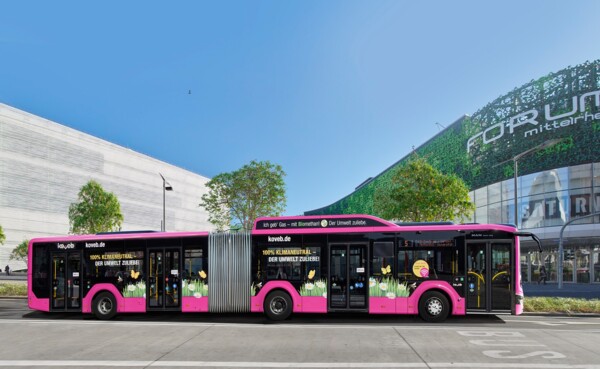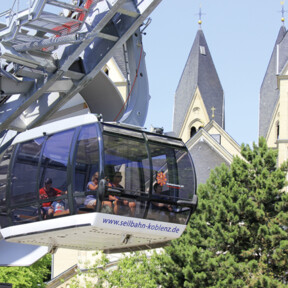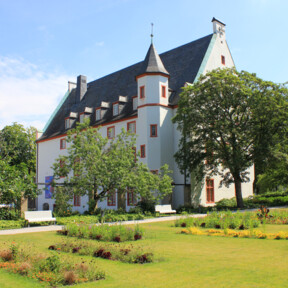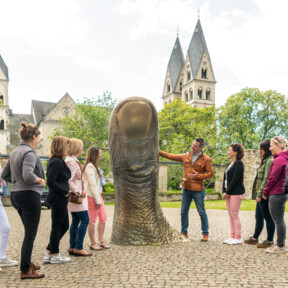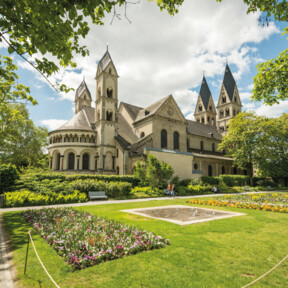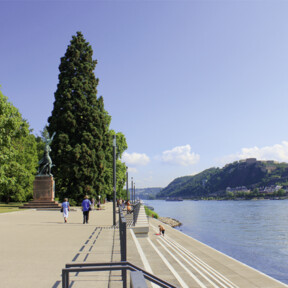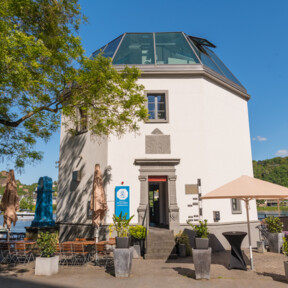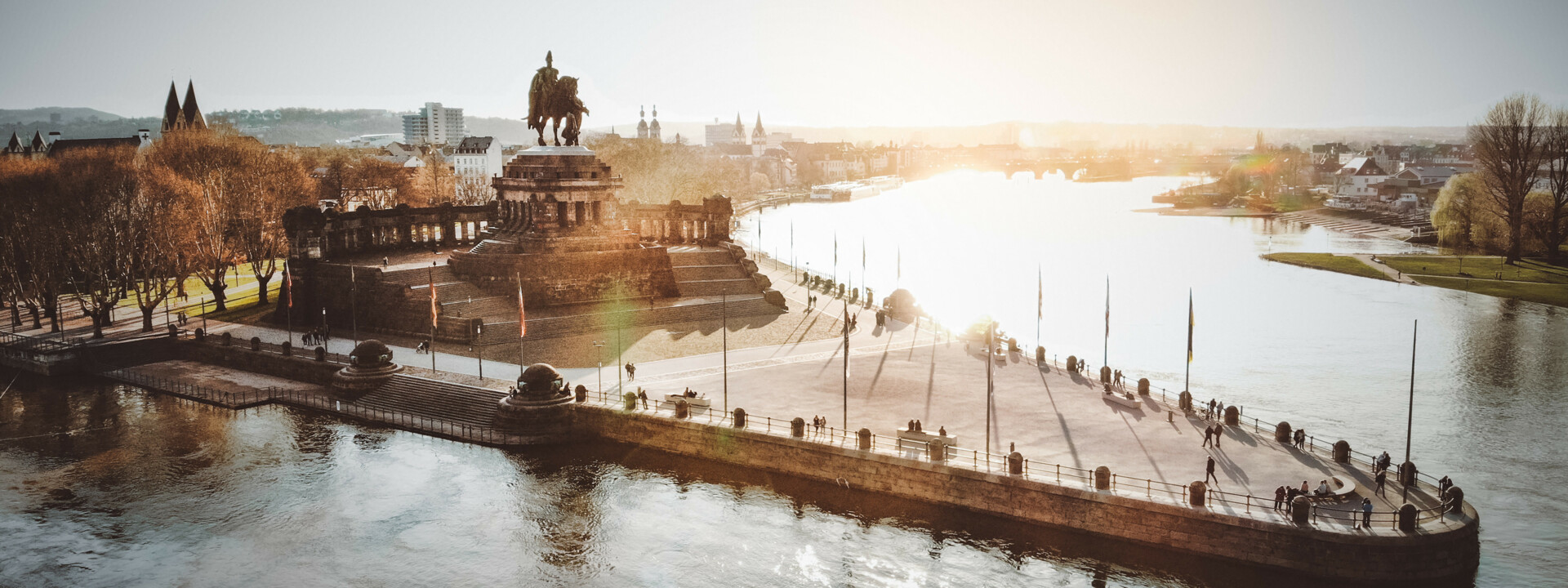
The Deutsches Eck
Where Father Rhine meets Mother Moselle.
The settlement of the Teutonic Order at the confluence of the Rhine and Moselle rivers in 1216 gave this historically significant place its name "Deutsches Eck". Koblenz also owes its name to the confluence of the Rhine and Moselle. Over the course of time, "Castellum apud Confluentes", Latin for "the fort at the confluence", transformed into the present-day name of Koblenz.
The Kaiser-Wilhelm Monument
On August 31, 1897, the copper monument was solemnly inaugurated by Kaiser Wilhelm I in the presence of Kaiser Wilhelm II.
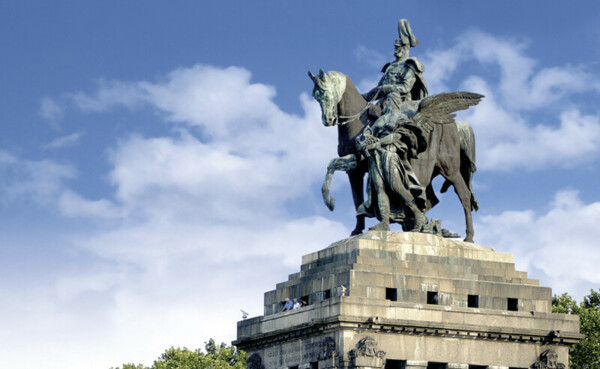
Destroyed by artillery fire in March 1945, Theodor Heuss rededicated the riderless pedestal as a memorial to German unity in 1953. Until 1993, a flagpole with the German federal flag was enthroned here. Finally, in autumn 1993, a reconstruction of the monument was raised onto the plinth. Today, the 37-metre-high monument–14 metres of which are accounted for by the equestrian statue showing Emperor Wilhelm I with a genius–attracts more than 2 million visitors a year and has been part of the UNESCO World Heritage Site "Upper Middle Rhine Valley" since 2002.
Experiences at the Deutsches Eck
Guided Tours
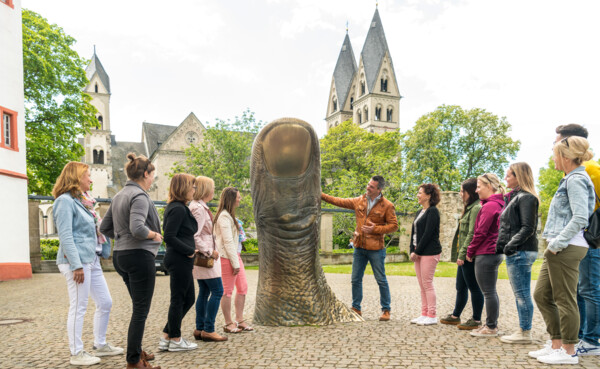
Events

How to Get to the Deutsches Eck
The journey to the Deutsches Eck on foot or by bike offers various attractive routes through the beautiful old town of Koblenz or along the Rhine Promenade. The picturesque alleyways and historic squares of the old town provide an authentic insight into the city's history. Alternatively, visitors can stroll along the Rhine Promenade which impresses visitors with magnificent views of the river and the surrounding countryside.
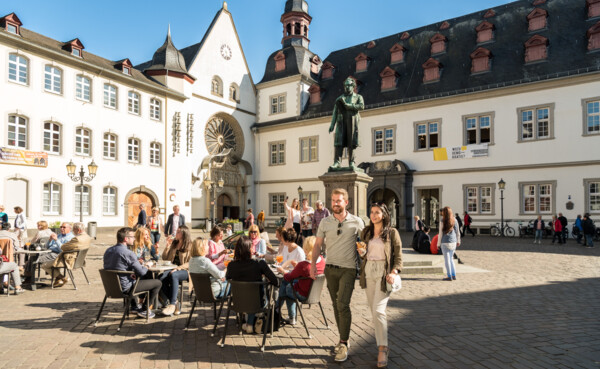
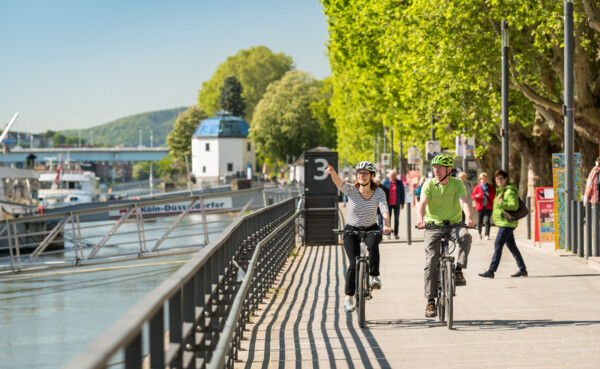
The Koblenz Cable Car
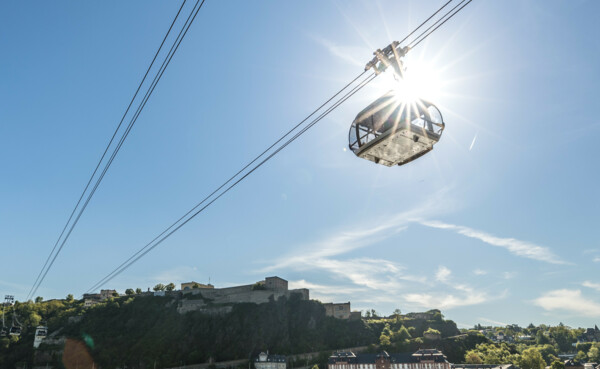
Bus Connection to the Deutsches Eck
